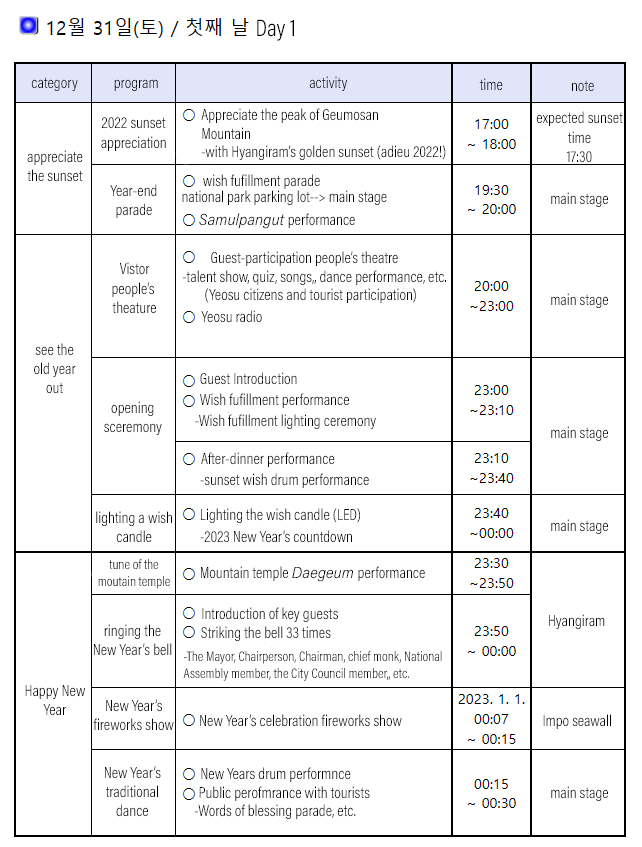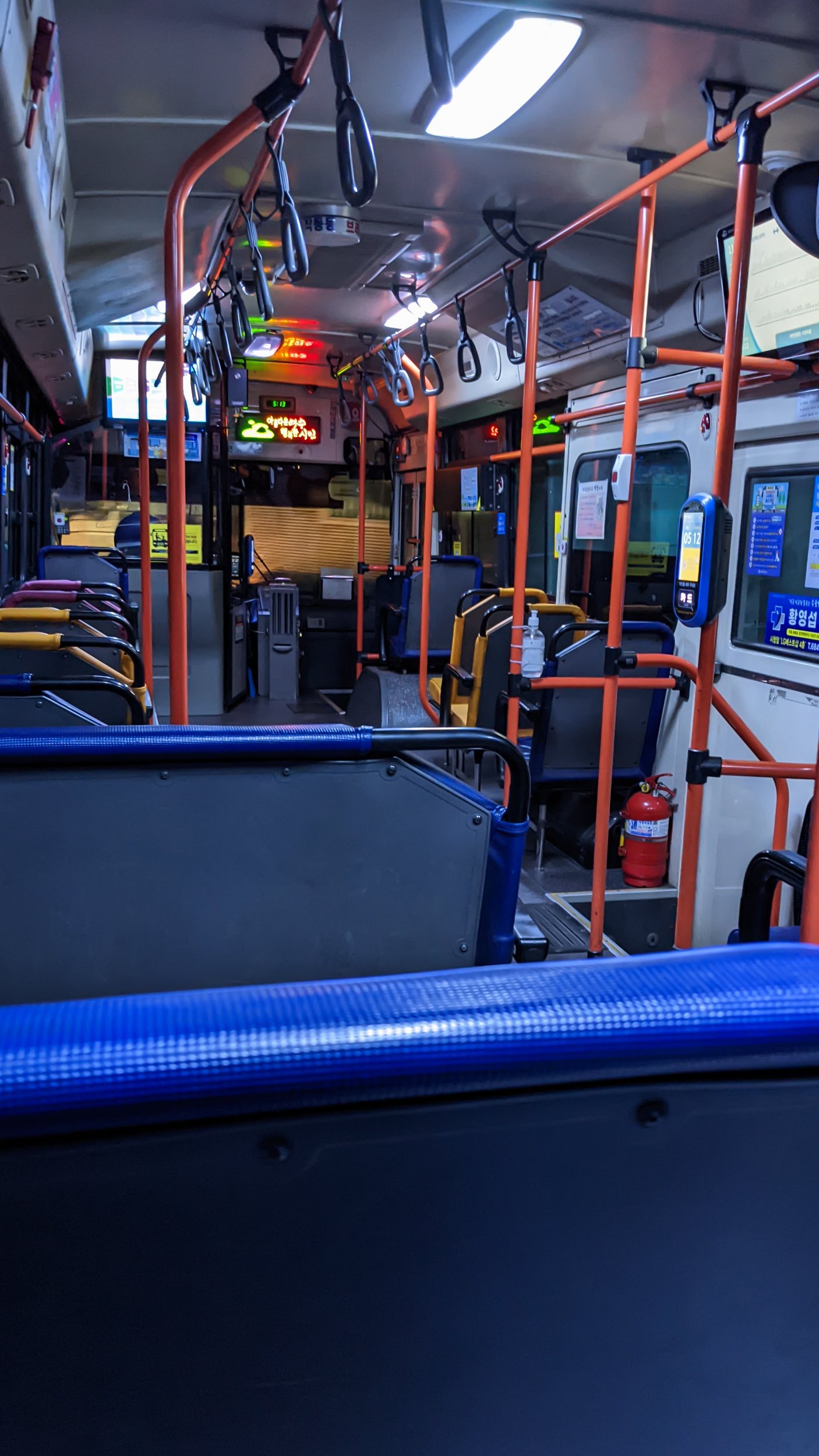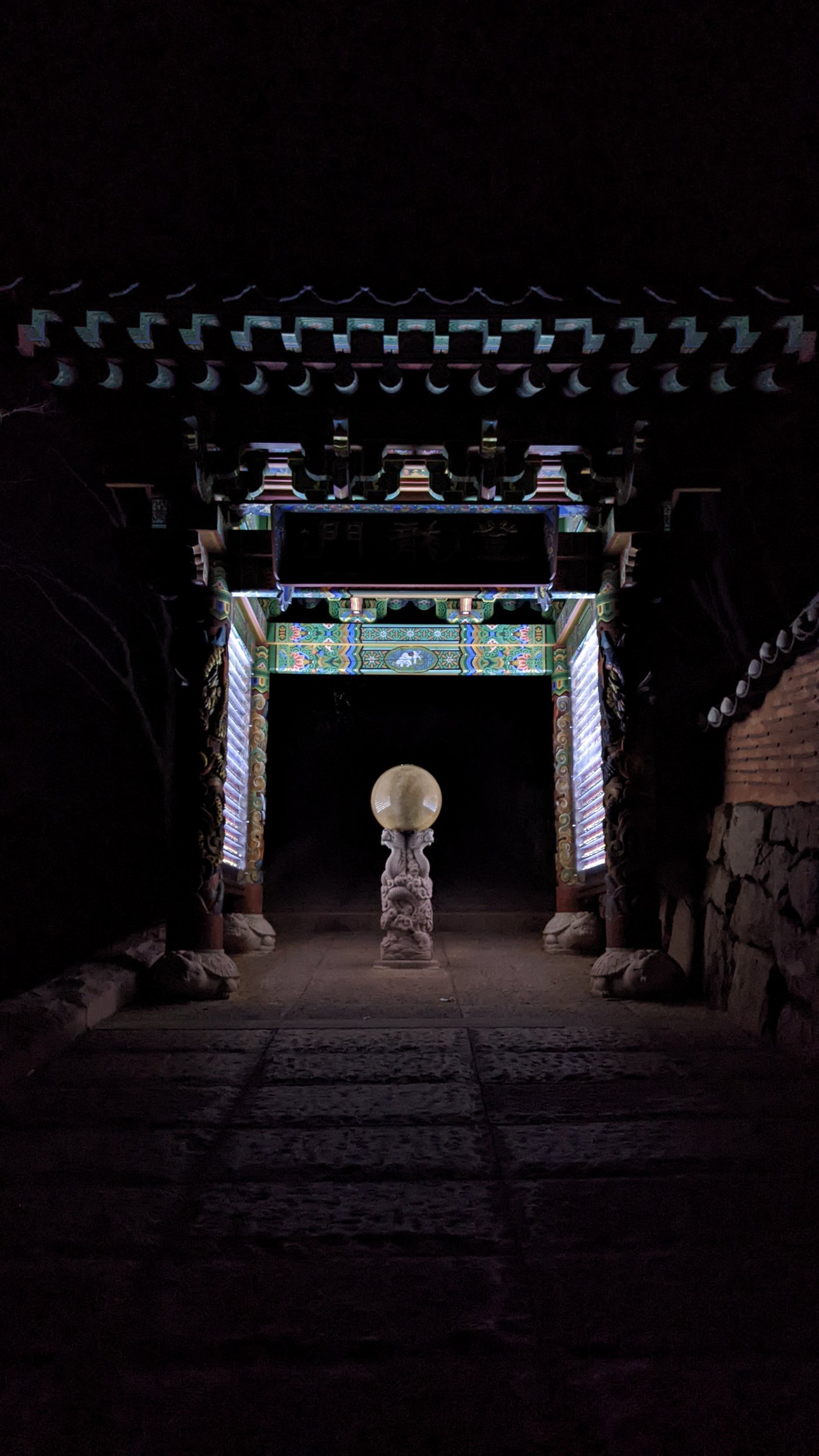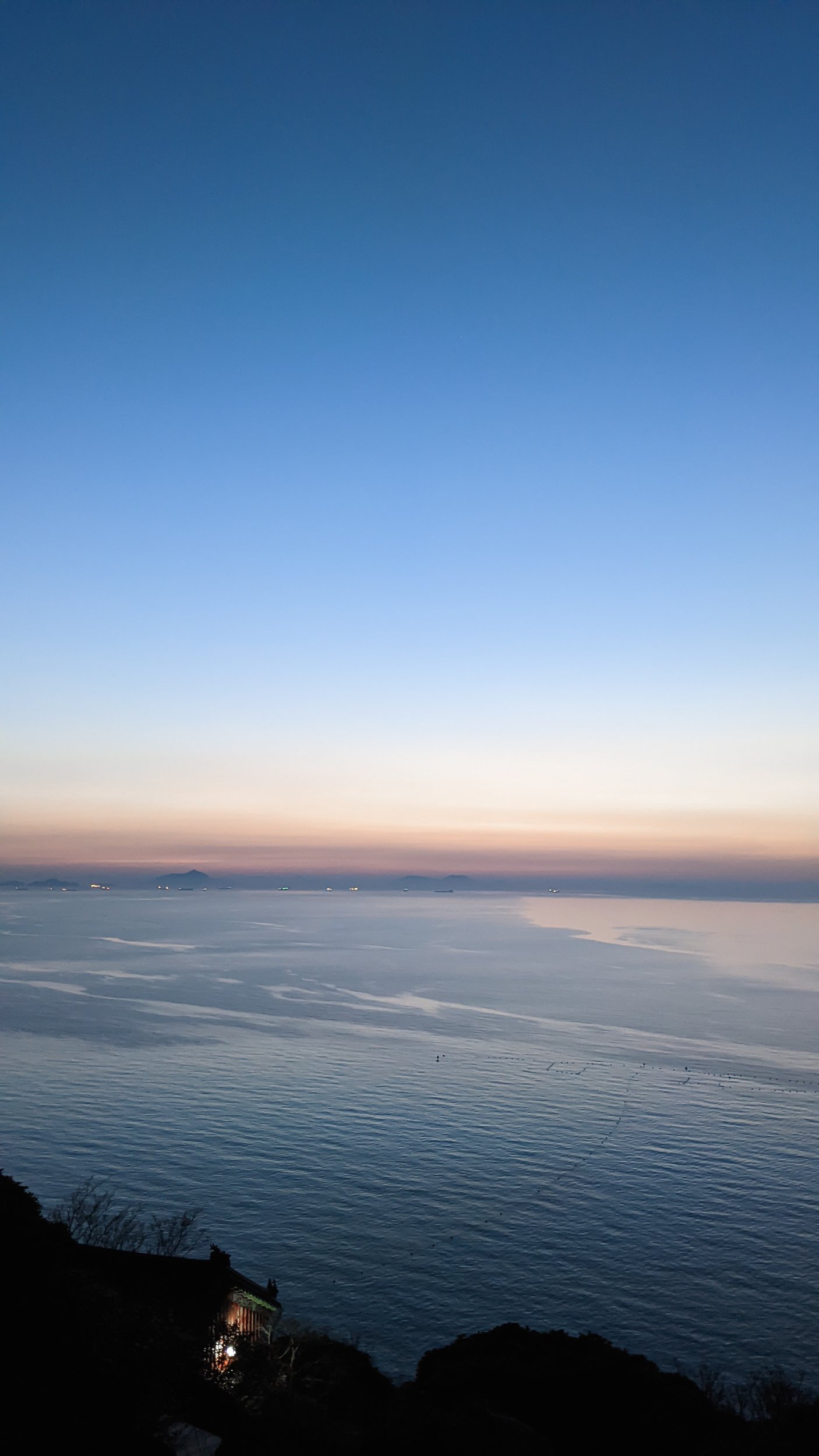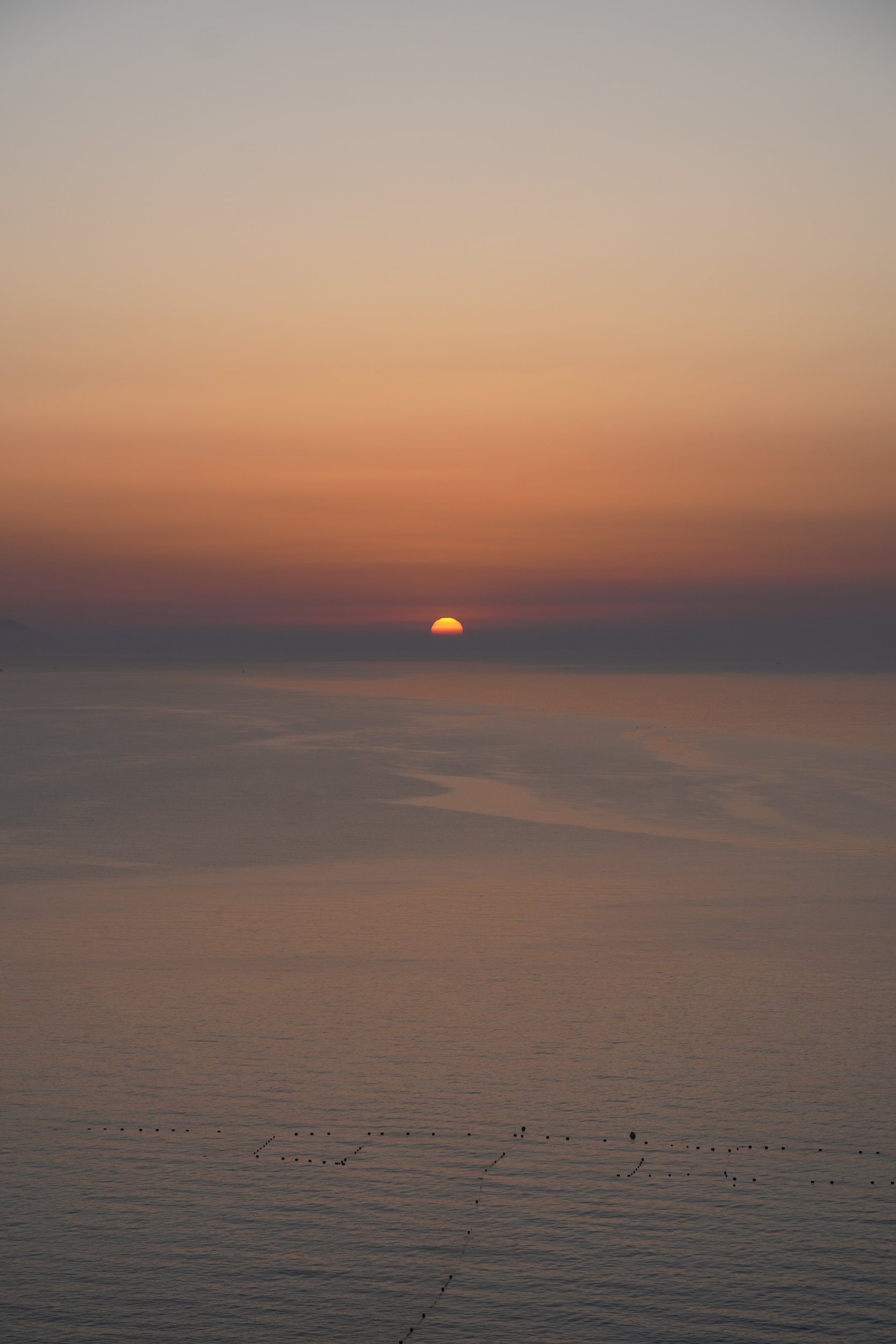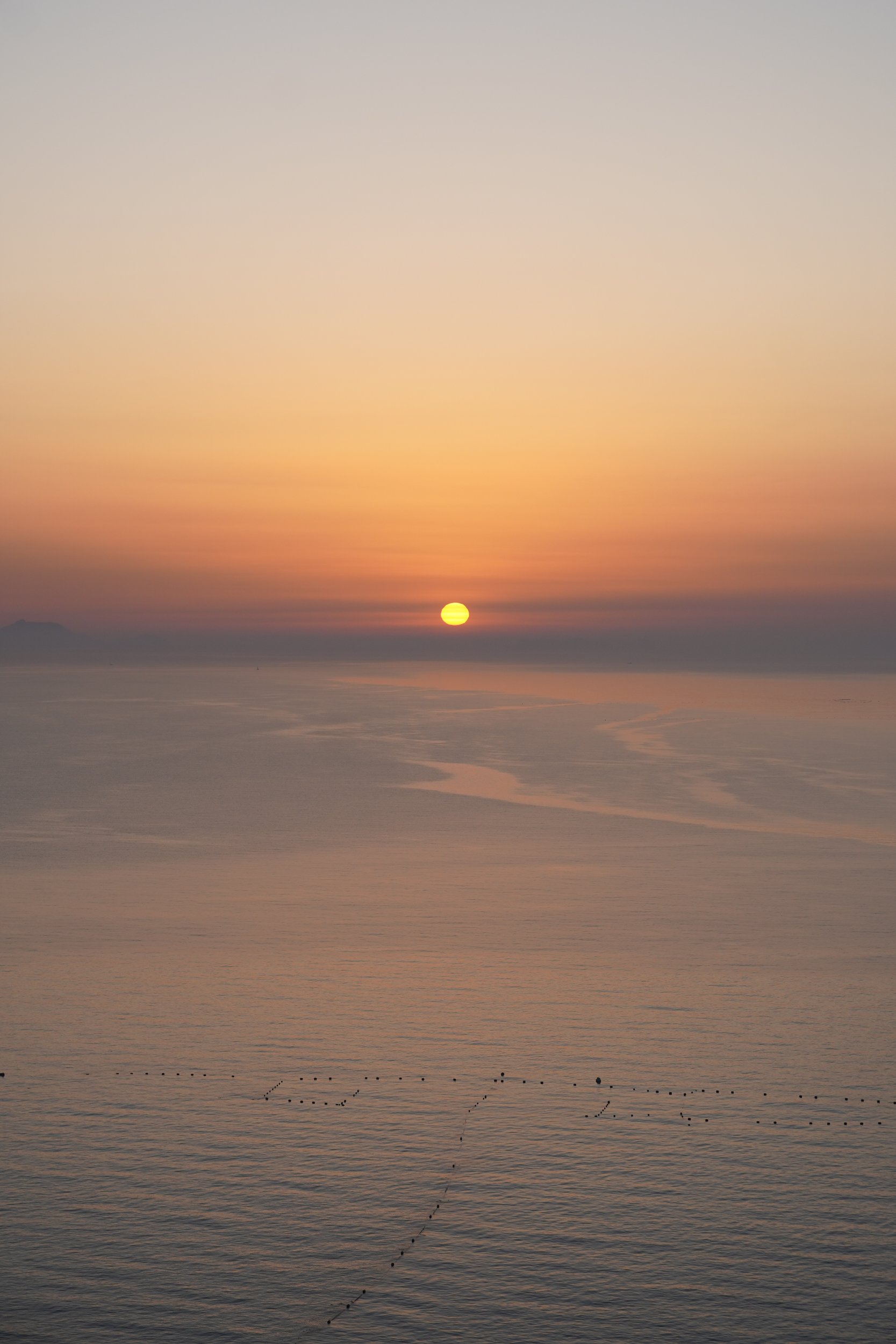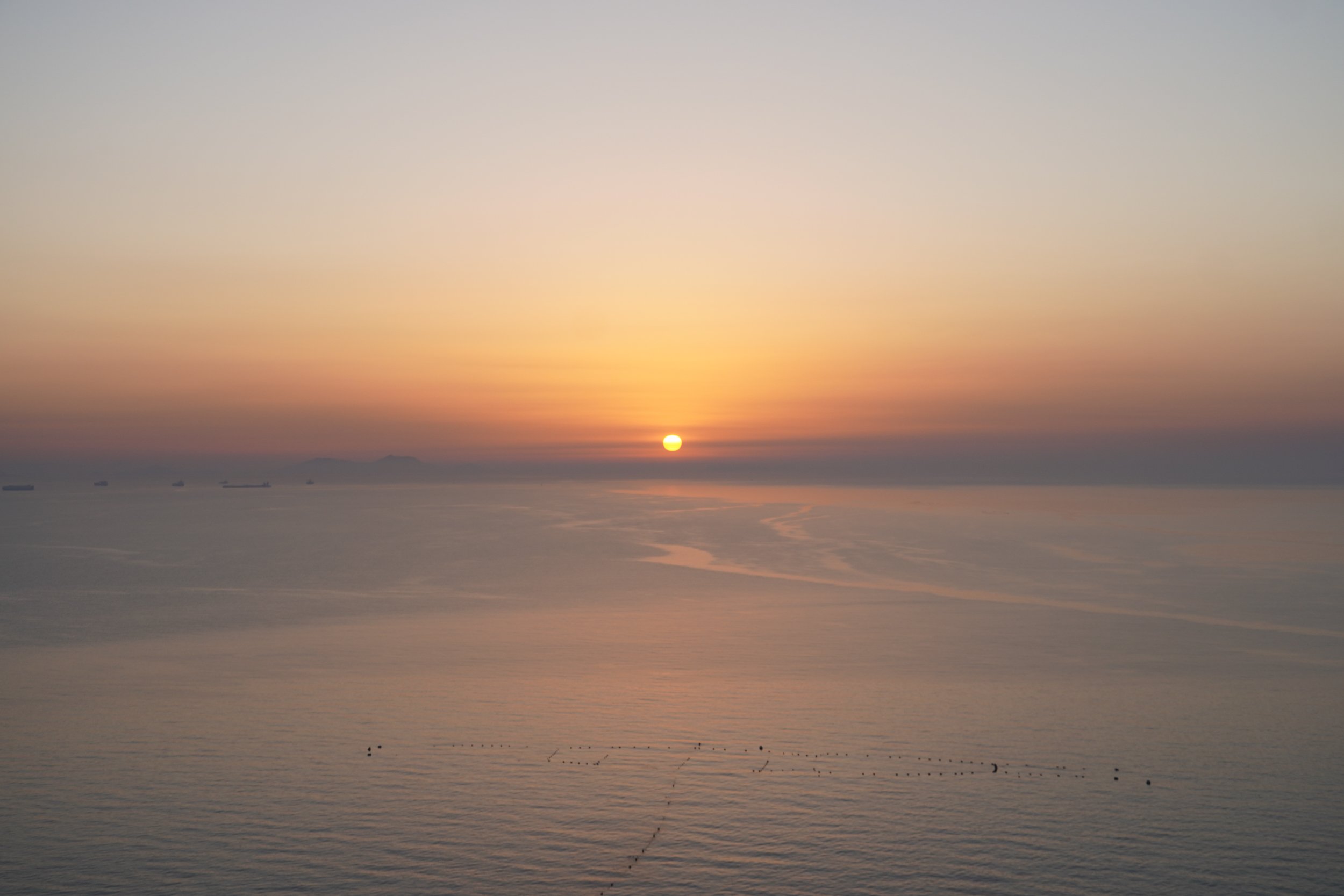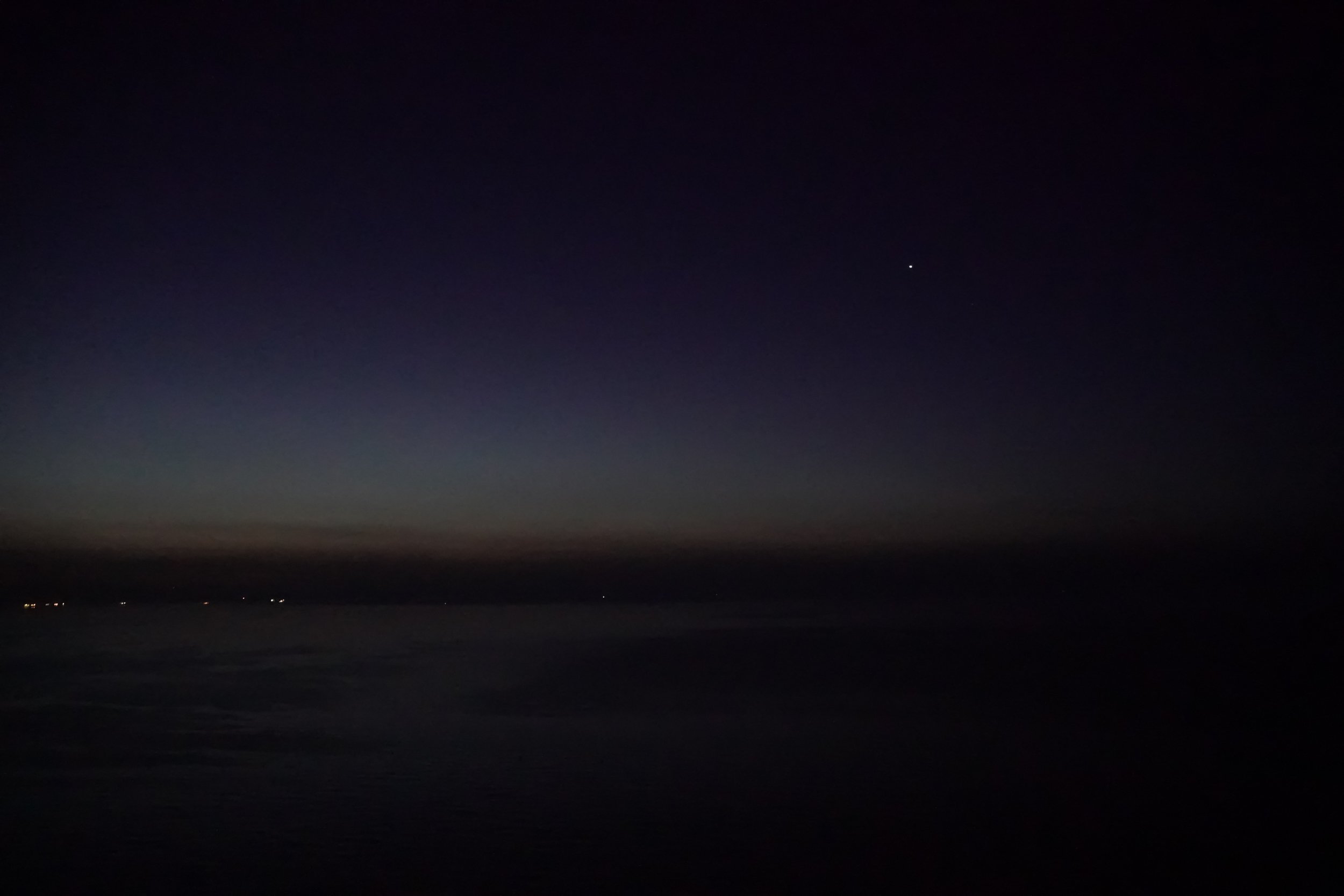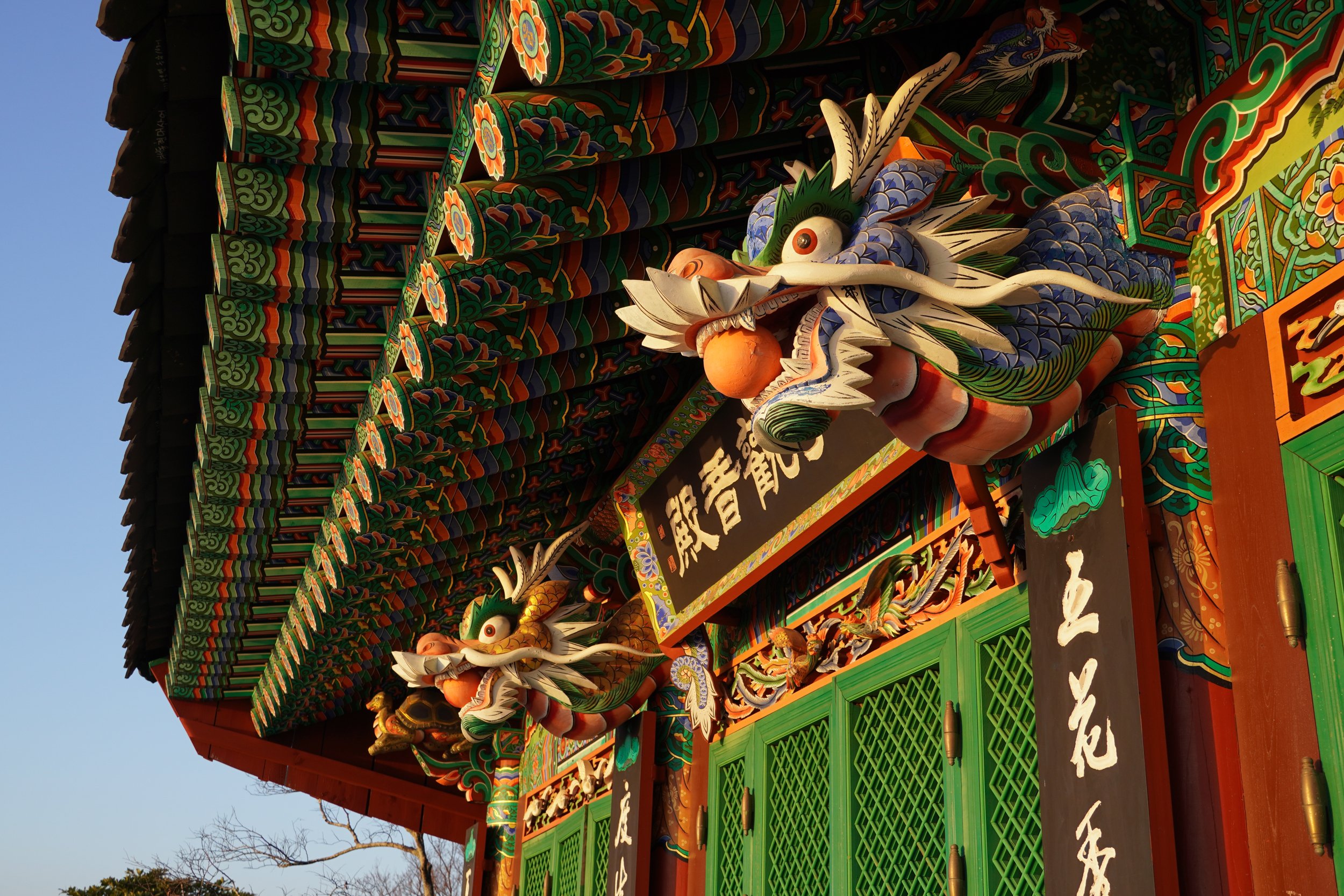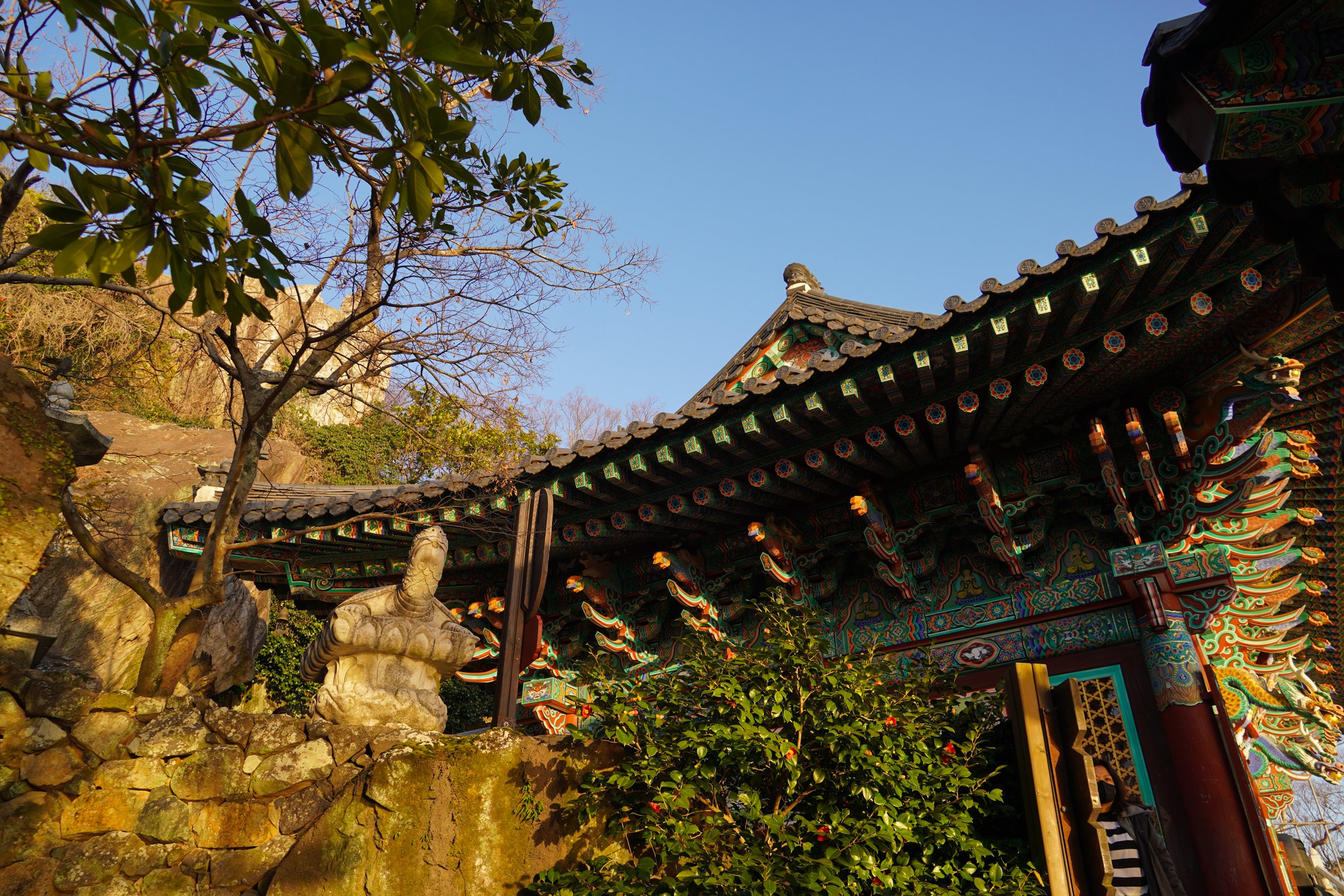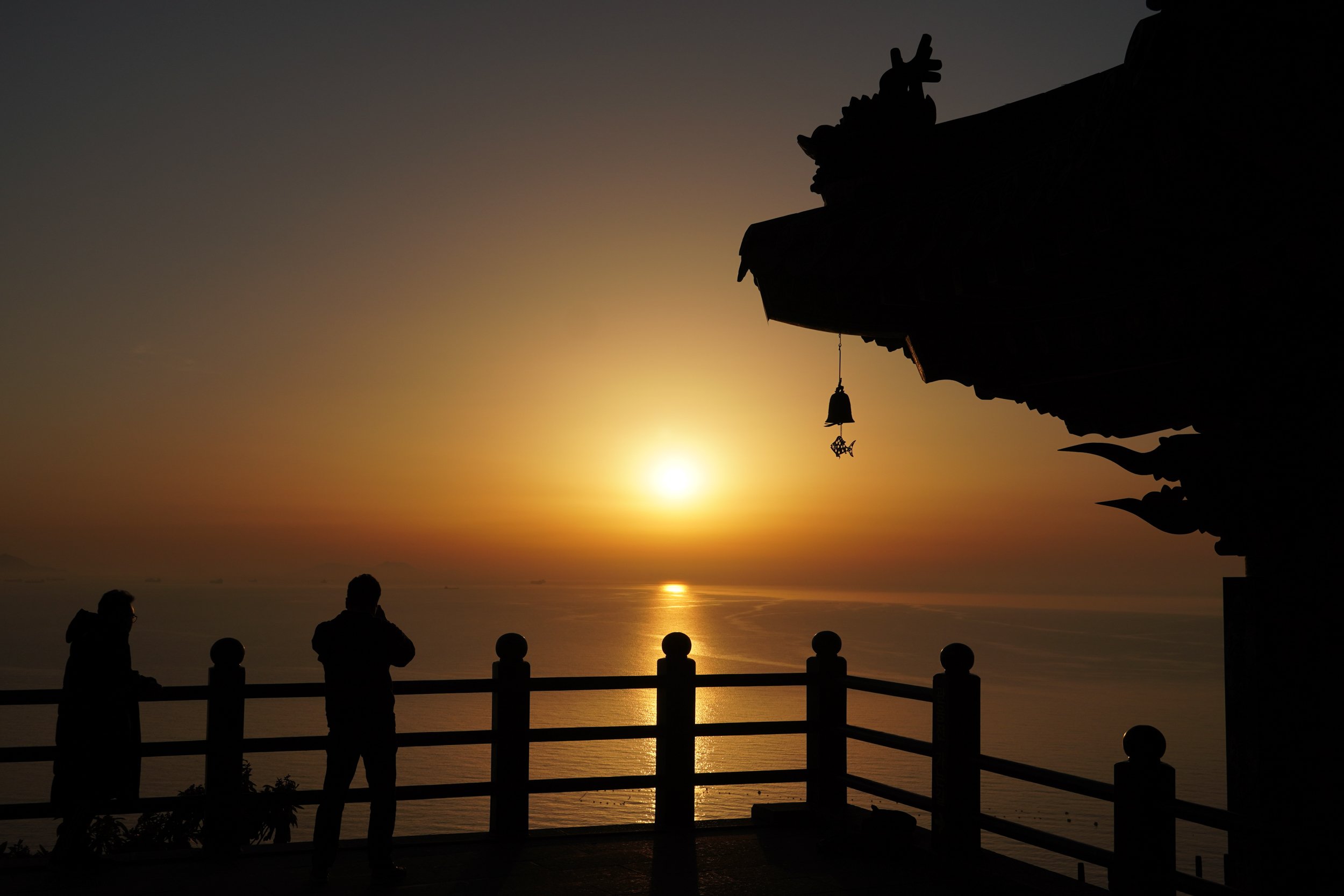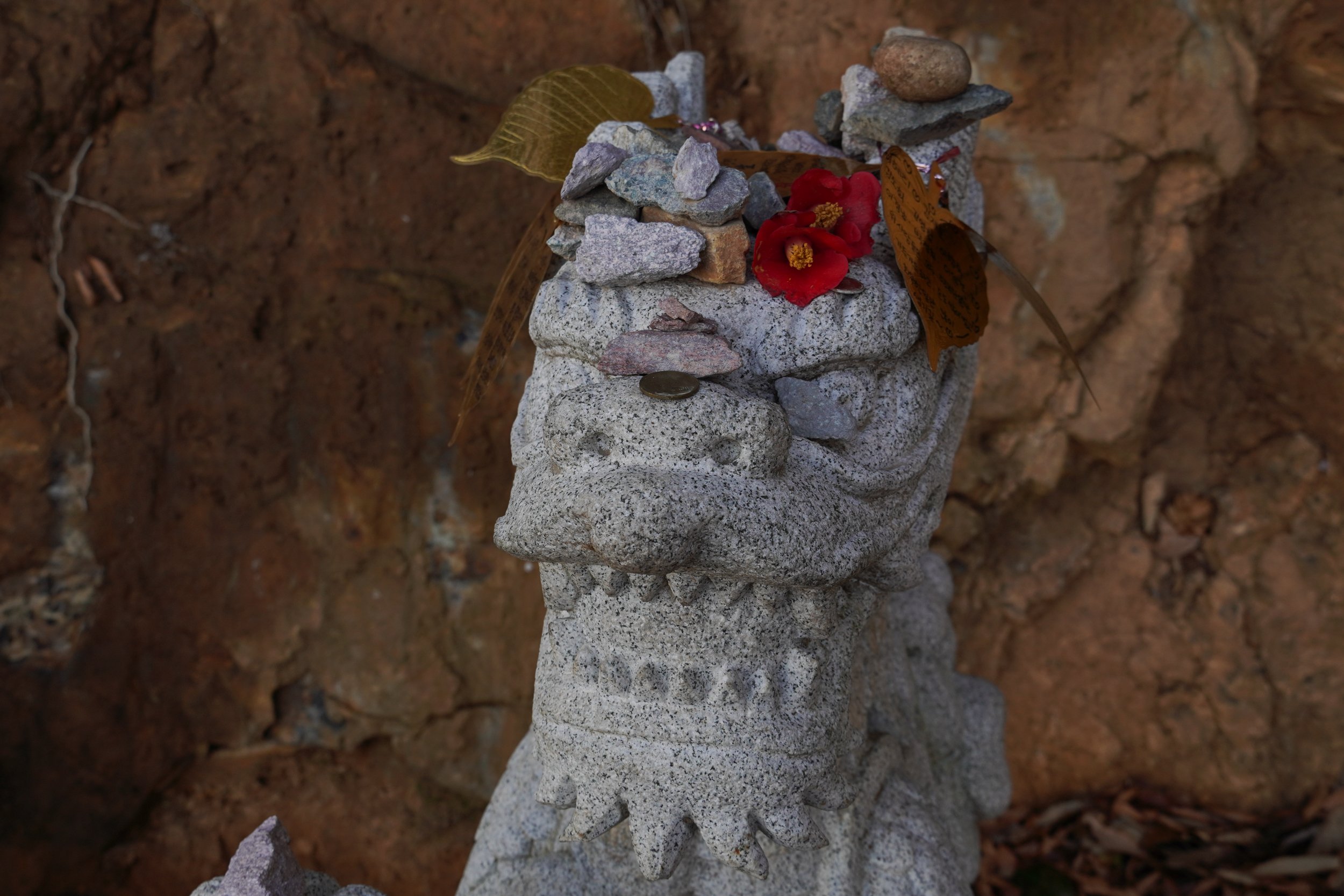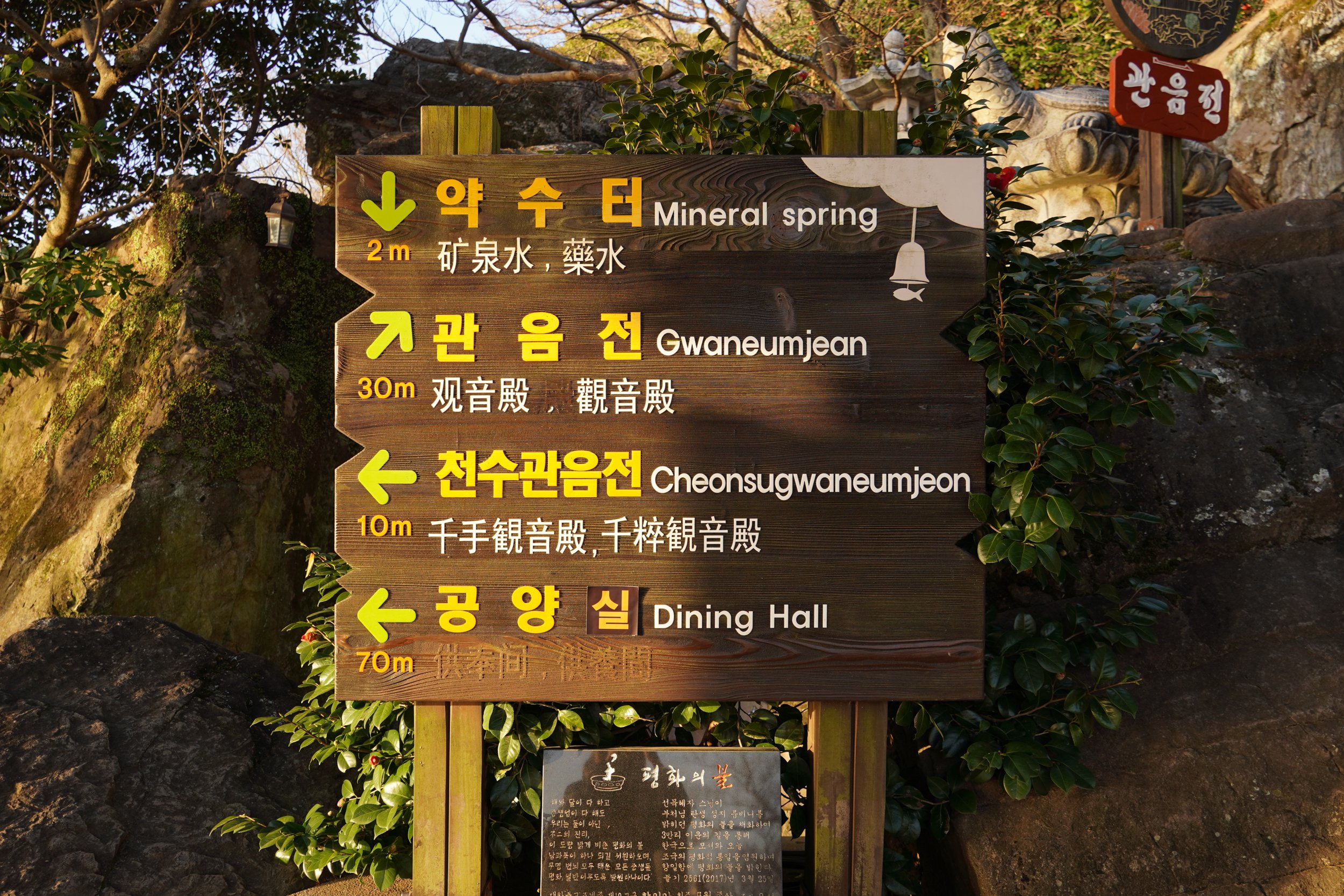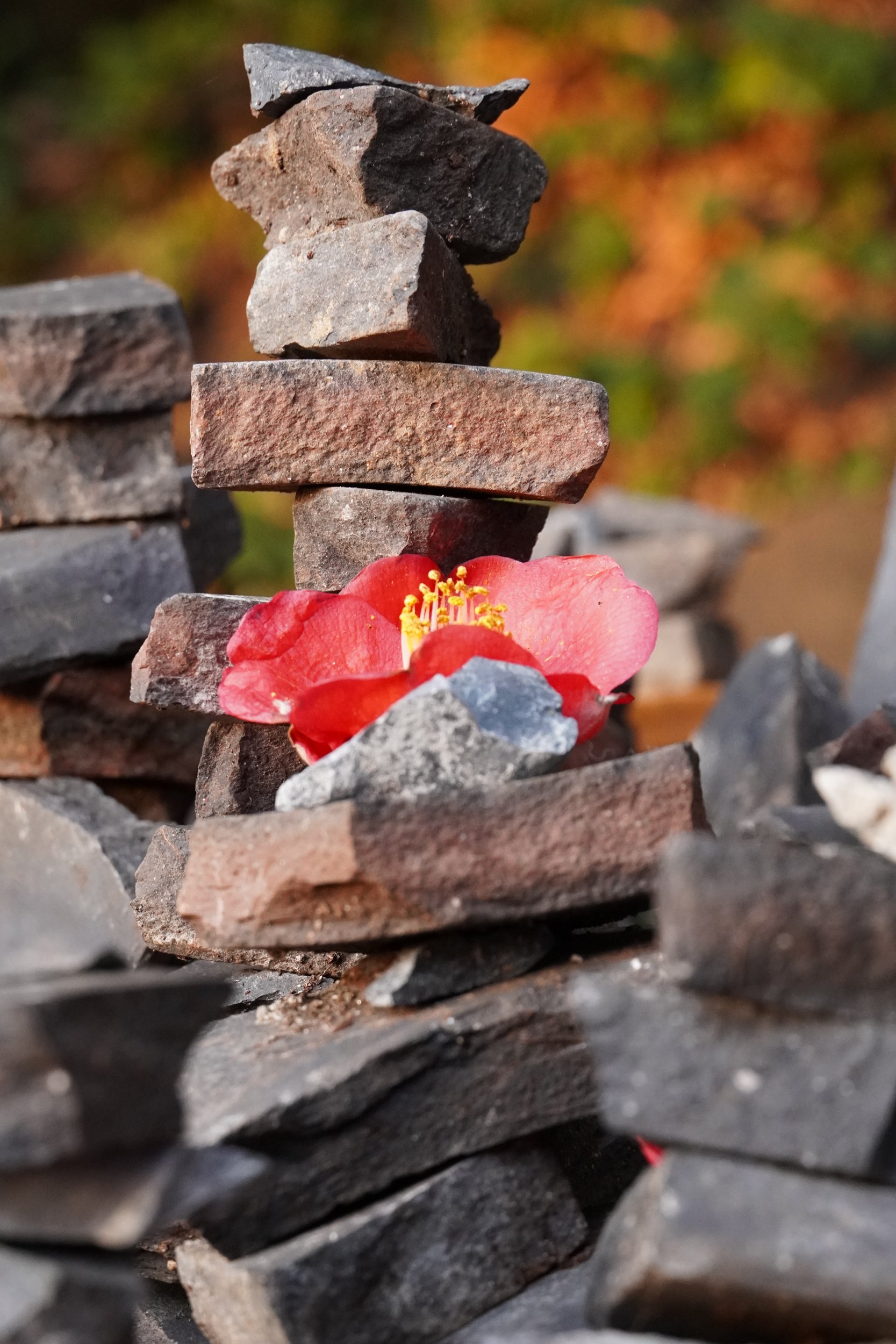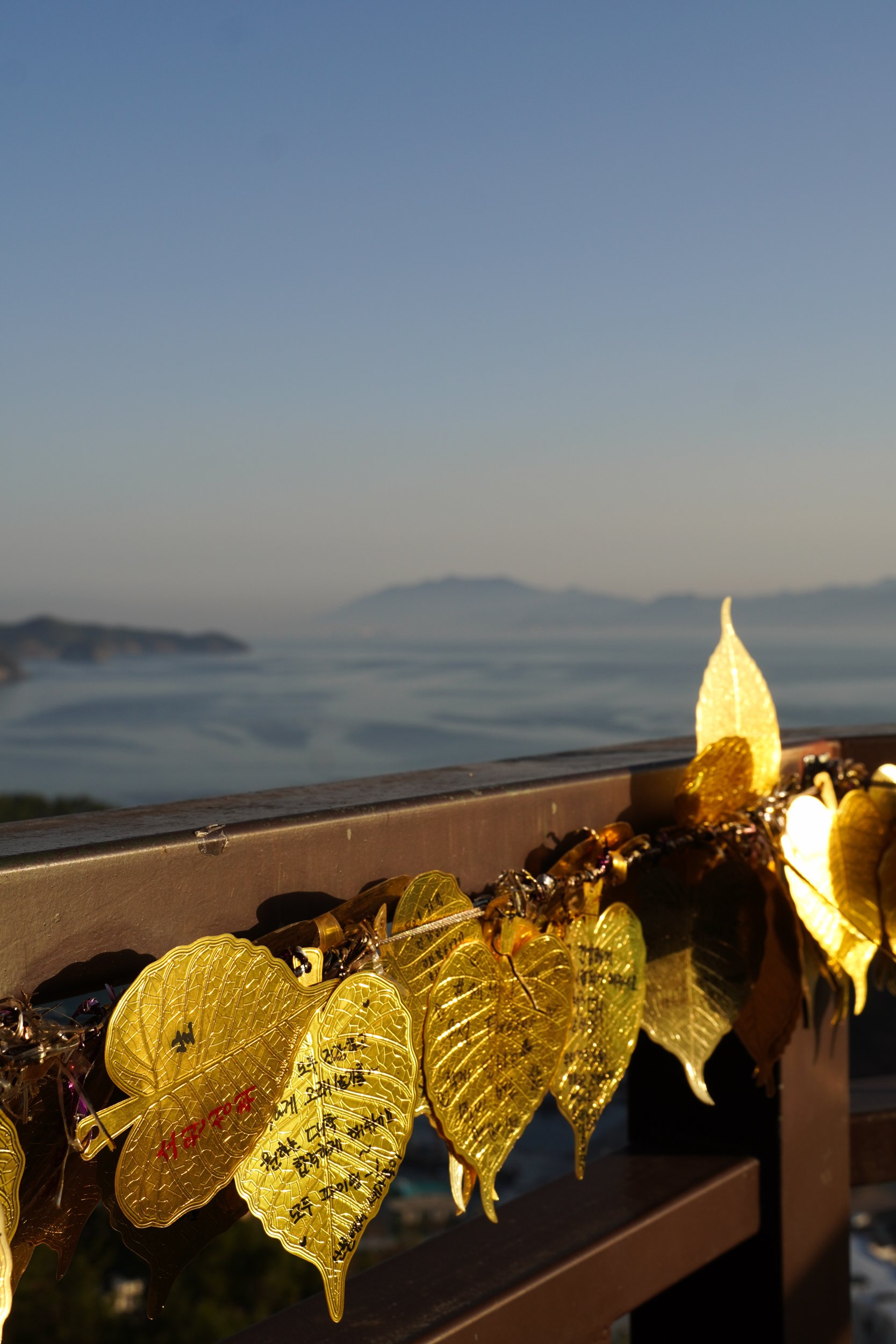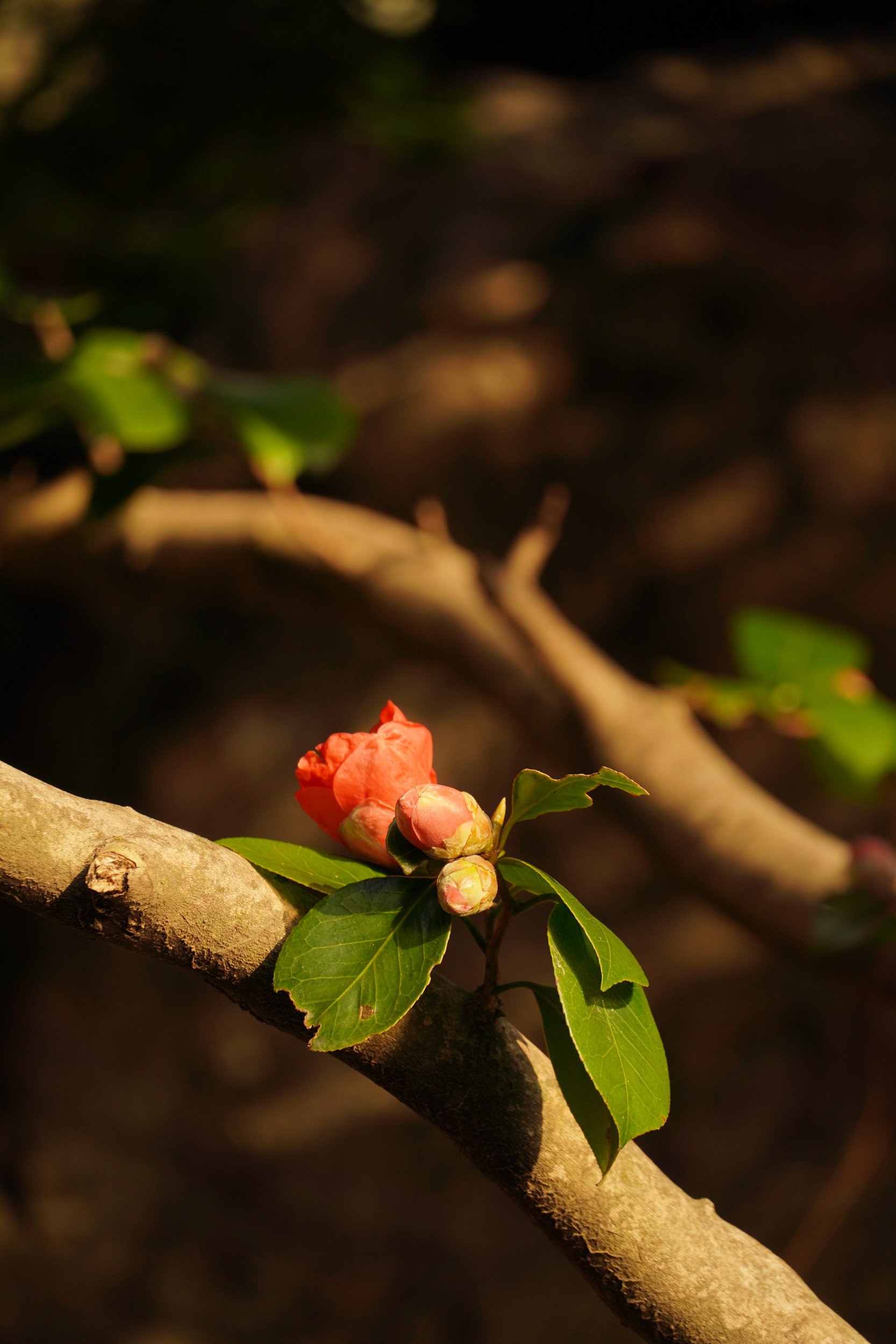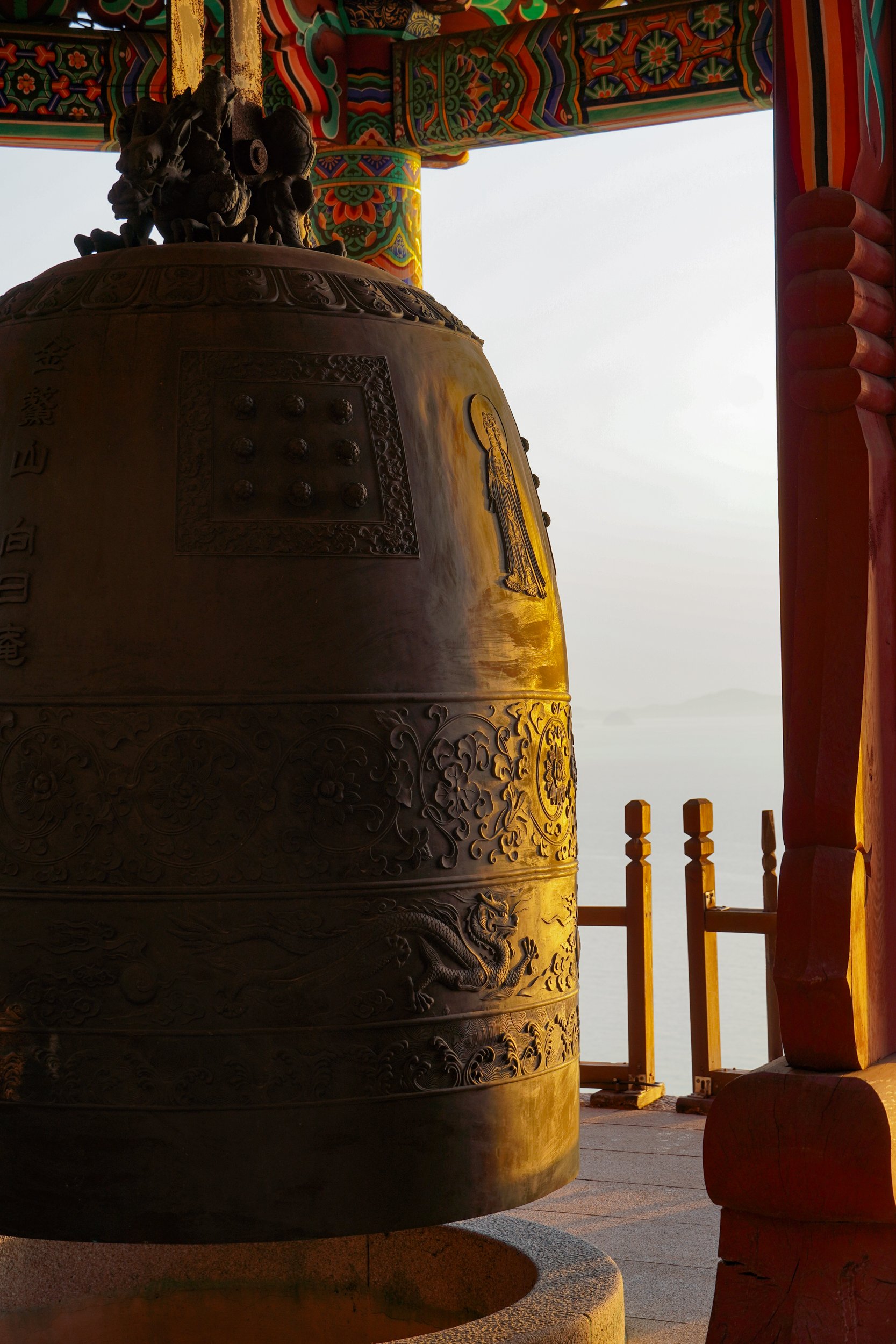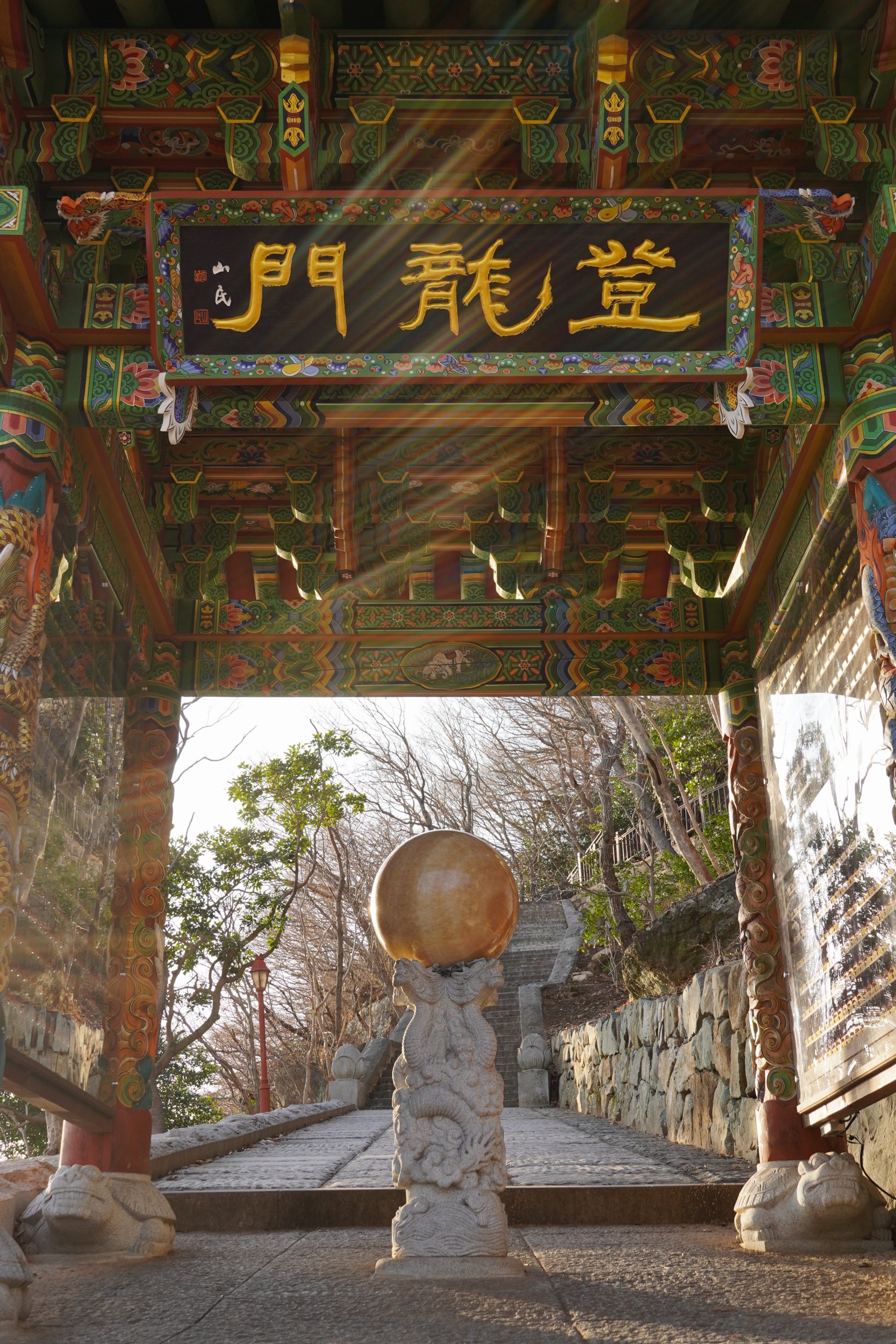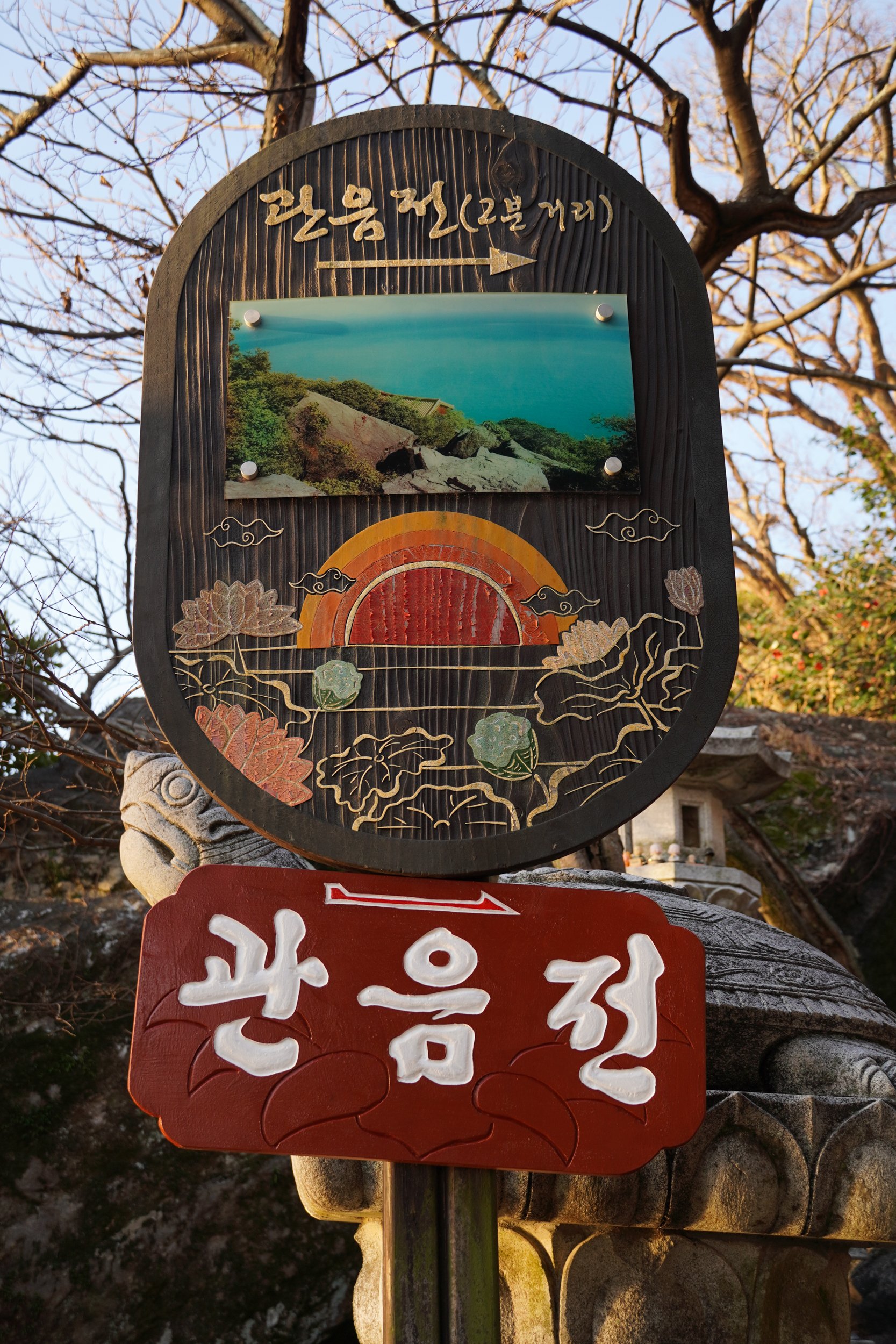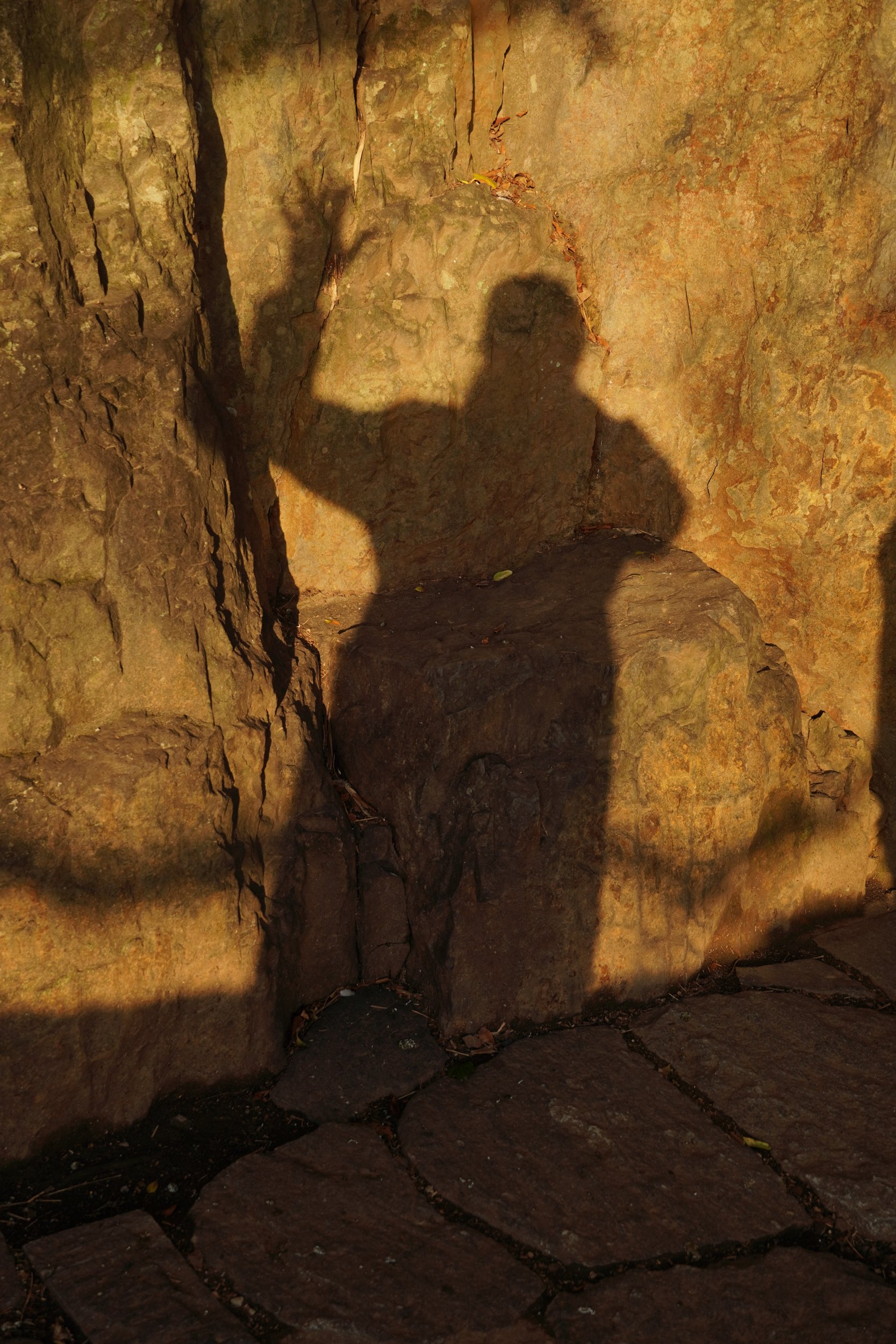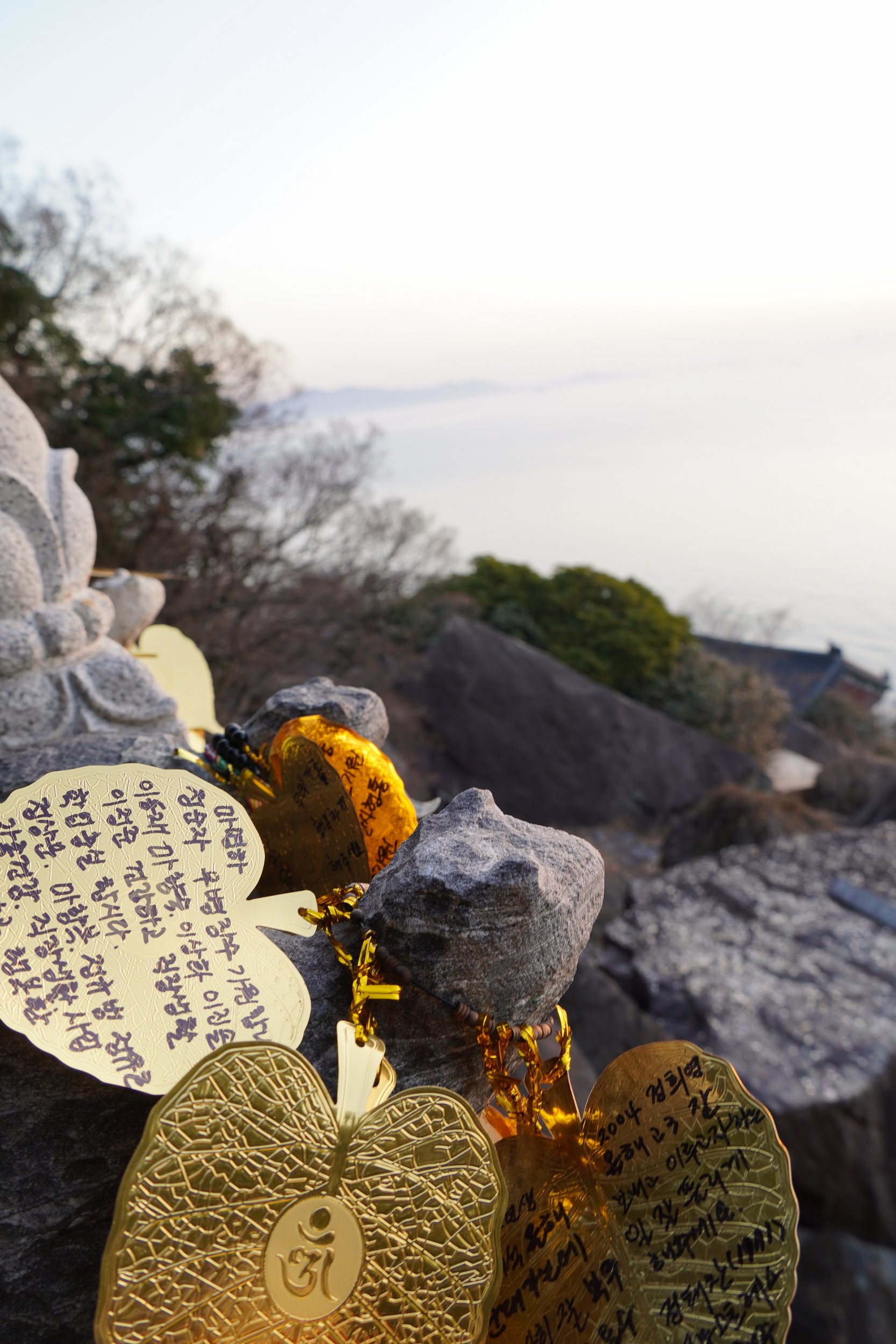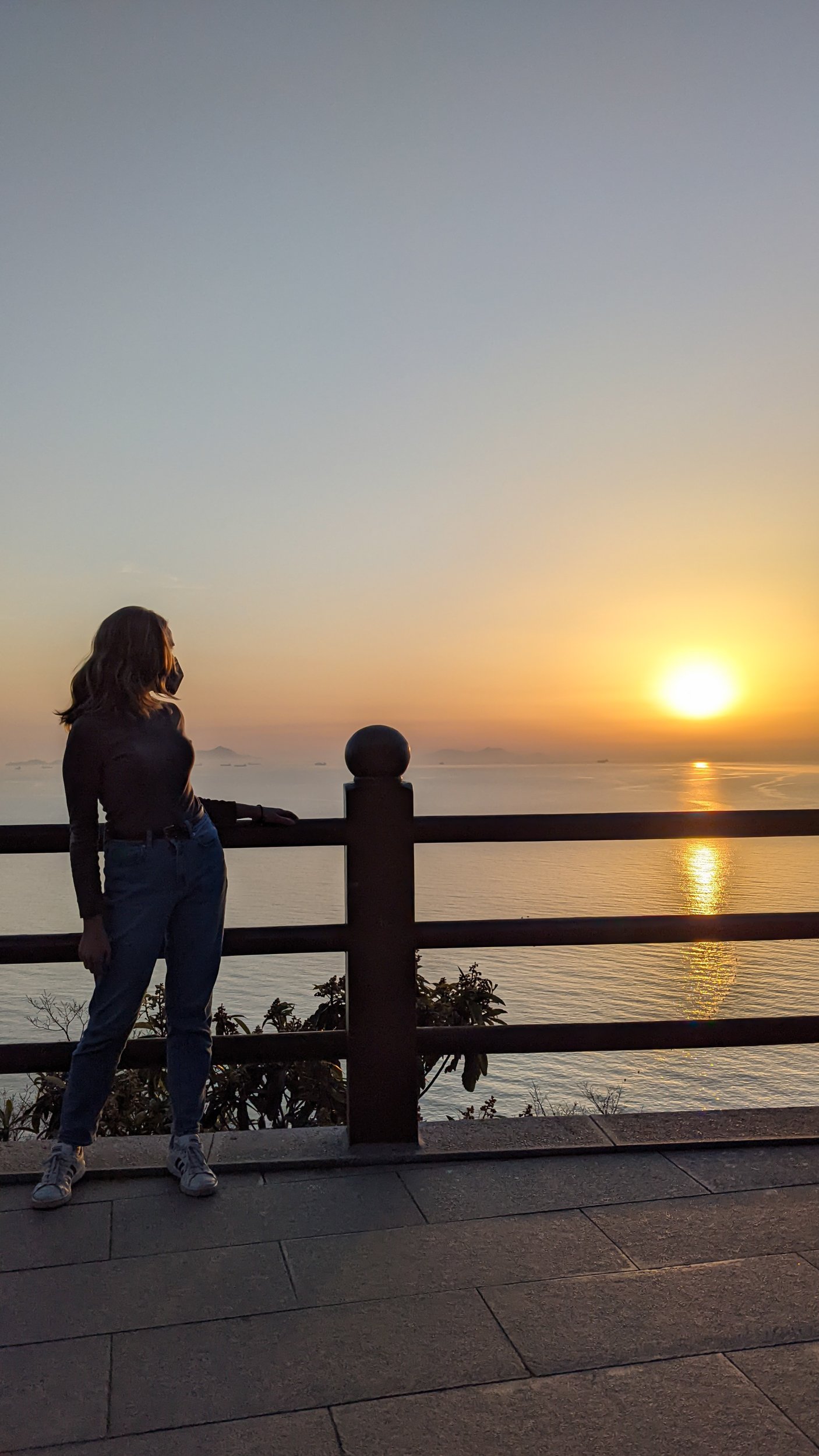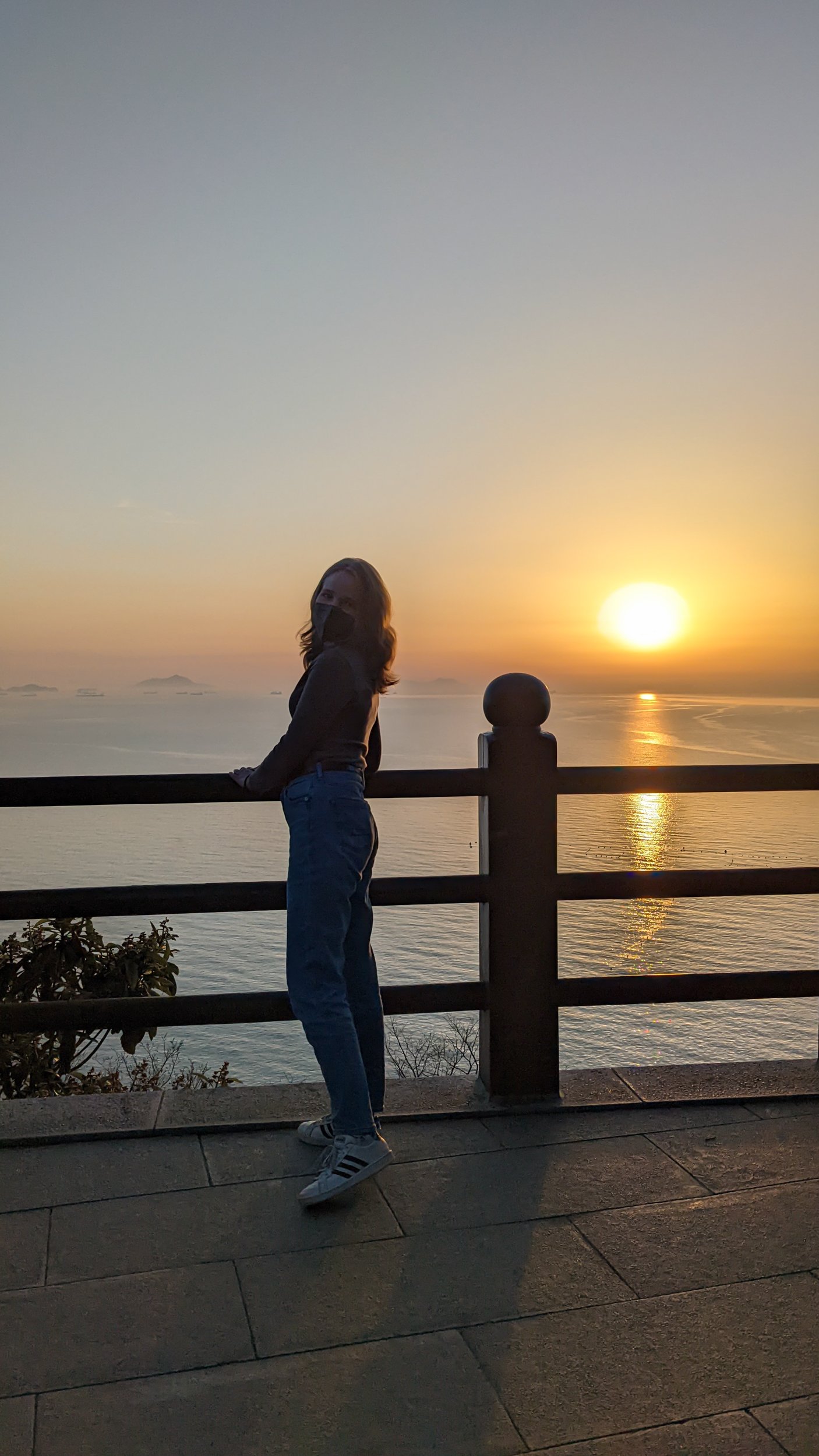Watching the Sunrise at Hyangiram Hermitage, Yeosu
Located on the far southern edge of Yeosu and gazing out over the East Sea, Hyangiram Hermitage is a seaside Buddhist temple that is often recognized as one of the best sunrise-viewing spots in all of South Korea— hence its name, meaning “hermitage facing the sun.” Each year, travelers from all over scale Hyangiram’s famously steep slopes to witness the sun cast its warm glow onto the horizon and to make wishes of health, happiness, and more for the years to come. From the trip down to the temple, to its magnificent views and tranquil atmosphere, Hyangiram Hermitage is one place that cannot be missed while in Yeosu. This post will cover all you need to know about visiting Hyangiram Hermitage, including how to get there, what to expect, the annual Sunrise Festival, and more. So, without further ado, let’s get started!
History
Hyangiram Hermitage was established in 664 by Wonhyo, one of East Asia’s most influential Buddhist philosophers and the father of Korean Buddhism.
There is a famous story about Wonhyo’s enlightenment: while on a ship headed towards China to study Buddhism with his friend and fellow philosopher Uisang, an intense storm forced the two of them to take shelter in a cave off shore. During the night, Wonhyo became extremely thirsty and drank what he perceived to be fresh water from a gourd. In the morning, however, he discovered that the gourd he drank from was actually a human skull and that the water was brackish. Upon seeing this, Wohyo became enlightened, realizing that the human mind is extremely powerful in shaping how we perceive our reality. Following this experience, he immediately returned to Korea to share his knowledge with others.
It is said that Wonhyo built Hyangiram Hermitage after encountering Avalokitesvara, the bodhisattva of virtue and compassion. Following Hyangiram’s establishment, it was used as a base by Buddhist warrior monks during the Imjin War (1592-98) before being burned down in 1592. Hyangiram was rebuilt in 1715 then caught fire again in 2009, but has since been restored.
Hyangiram Sunrise Festival
The most popular event to take place at Hyangiram Hermitage is the annual Sunrise Festival, during which spectators from all over gather to observe the first sunrise of the new year.
The Sunrise Festival runs overnight from December 31st to New Year's Day. Day 1 features a large variety of festivities include a parade, artistic performances, and a firework show to celebrate the last sunset of the year. On Day 2, spectators gather early in the morning to watch the first sunrise of the new year.
Last year, events on Day 1 began at 17:00 and at 7:00am on Day 2. I have translated the activities from last year’s Sunrise Festival below.
Getting There
Car
By car, the drive to Hyangiram Hermitage takes about 30~40 minutes if coming from the northern central Yeosu area, near the Yeosu Expo or Yeosu Bus Terminal.
There is a parking lot located just a five-minute walk away from the entrance to the temple. However, be warned that the walk up to the entrance is rather steep. Parking is free for the first hour, then 200 won for every additional 10 minutes. The maximum daily fee is 5,000 won, or about 5 hours including the first free hour. Parking is also free during the lunch break (12:00~14:00). Since the parking lot isn’t very big, spaces can fill up fast— especially during holidays and on weekends if you’re not visiting early in the morning.
Bus
To get to Hyangiram Hermitage by bus, you can take either Bus 111 or Bus 116 from the Yeosu Bus Terminal. Both take about 1 hour 10 minutes. My accommodations were near the Yeosu Expo, so I boarded Bus 111 at the nearby Donggwangtang (National Pension Service) [통광탕 (국민연금공단)] bus stop.
To see the sunrise, I took the earliest available bus at 4:30am. When I first boarded the bus, there was a surprisingly large number of ajummas [older Korean women] also riding which slightly calmed my nerves about the late-night ride. However, most of them got off before the bus exited the metropolitan area, so for the majority of the trip I was alone.
I’d heard from others that the bus ride down to Hyangiram Hermitage can be quite scary since the road is narrow with many twists and turns. That wasn’t a key concern for me, however, since outside my window it was pitch-black. The bus does sway back and forth quite a bit, though, so be prepared for that if you get carsick easily.
The bus drops you off at Impo (Hyangiram) bus stop [임포(향일암)]. From there, it’s an 8-minute walk to the entrance of the temple. While short, the path up is very steep, foreshadowing the journey to come.
The walk up to Hyangiram Hermitage
Entrance
At the entrance to the temple is the ticket booth. Tickets are 2,500 won for adults, 1,500 won for military and youth, and 1,000 won for children. Veterans, disabled, and children under school-attending age can enter for free.*
If visiting outside of the temple’s normal operating hours (when no one is there) then entrance is free.
*the prices shown have changed since this photo was taken; current prices are listed above
Past the ticket booth and up the first flight of stairs is a split in the road: to the left is the shorter stair route and to the right is the slightly longer, more comfortable route. It’s recommended to take the left course up and the right course back down. The hike itself is short and can be completed in about 15~20 minutes. However, it is quite exhausting and a true testament to one’s stamina. There also isn’t much illuminating the path at night, so I recommend using your phone’s flashlight or bringing a flashlight with you.
Passages
Along the trail are various passages carved from rock. Haetalmun [below, far right] is the most famous of these passages, known for being exceedingly narrow. It is said that passing through Haetalmun, one must surrender their greed and desires; you can’t carry much with you and still fit through the small space. This lends to the passage’s name, meaning “liberation gate.” It is further believed that crossing through all seven of the stone paths at Hyangiram Hermitage grants you a wish.
Past Haetalmun is the main temple area. Even early in the morning, I could hear monks performing chants in the nearby buildings. While the viewpoint from here is nice, to have the best view of the sunrise, continue climbing up just a bit further to Gwaneumjeon, the highest point of the temple.
Once at the top, it’s finally time to rest your legs and wait for the sun to rise.
The Sunrise
Slowly, the night sky began to shift into various shades of blue and orange before the sun finally peaked out over the horizon, illuminating the ocean in front of it. It was quite serene, hearing nothing but the sound of birds chirping in the distance to welcome the morning and seeing the ocean delicately ripple like silk, endlessly expanding in front of my eyes. In that moment, all the worries that had previously occupied me about the excursion slipped away. It was truly an unforgettable view.
Looking down from the front railing there is a large flat rock labeled as monk Wonhyo’s meditation spot. Visitors often throw coins down onto it to make a wish.
Strung along the front railing and throughout the temple are golden leaves with the names and wishes of Hyangiram’s previous visitors written on them. Common wishes include health, happiness, and wealth for family members.
Trans: Wish fulfillment; health, happiness, love, and money for our family
Exploring the Temple
After taking in the view from the top, it was time to explore the other areas of Hyangiram. As the sunlight began to sprawl across the temple, it created a beautiful warm glow on all the buildings.
Turtles
Throughout Hyangiram are various statues of turtles, the symbol of the temple. This is because Hyangiram Hermitage sits on top of Geumosan Mountain; Geomosan means “large golden turtle,” getting its name from the fact that many of the mountain’s rocks have the surface texture of a turtle shell and also because the overall shape of the island is said to resemble a turtle carrying a Buddhist scripture on its back. From Hyangiram Hermitage, you can see the turtle’s head poking out towards the sea.
Retracing my steps, many of the narrow passageways which were ominous in the dark became quite pretty in the light.
Heading back down are these statues symbolizing the principle of “see no evil, hear no evil, speak no evil.” These statues became quite a popular photo spot in recent years due to BTS’ RM taking a photo with them back in 2018.
Back at the temple entrance
I recommend giving yourself at least 2 hours to explore the whole area. In total, I spent about 2.5 hours at Hyangiram Hermitage.
Return
To return by bus, you can take either Bus 111 from the Impo Hansol Hwaejjip [임포한솔횟집] bus stop or Bus 116 from the Impo Hyangiram [임포(향일암)] bus stop.
Bus schedule times: Yeosu (left) to Hyangiram (right)
Conclusion
There’s rarely been a instance where an excursion in South Korea has made me nervous in any type of way. In that regard, Hyangiram Hermitage was a first. Traveling alone in the dead of night across unknown territory and up the mountainside was honestly nerve-wracking. However, what I gained far exceeded my fears. Not only were the views stunning, but the emotions I felt—such serenity, but also an immense appreciation for the experiences I’d had thus far— have remained as a beautiful memory I’ll never be able to forget.
Additional Information
Hours: 4:00-20:00; last admission by 18:00 (closing hours do not apply to the sunrise festival)
Address: 전남 여수시 돌산읍 향일암로 60 종무소
Parking lot address: 전남 여수시 돌산읍 향일암로 70-4
